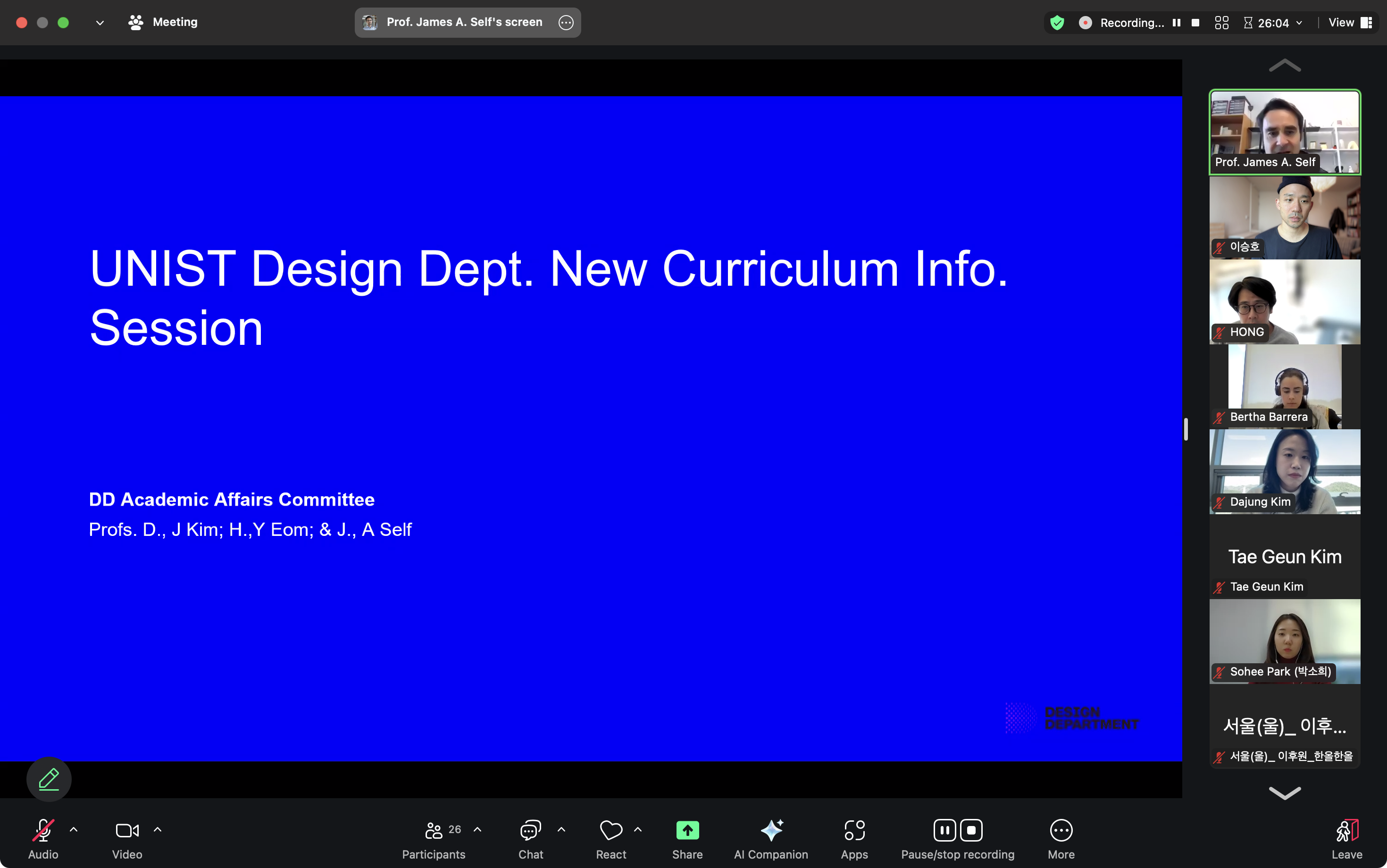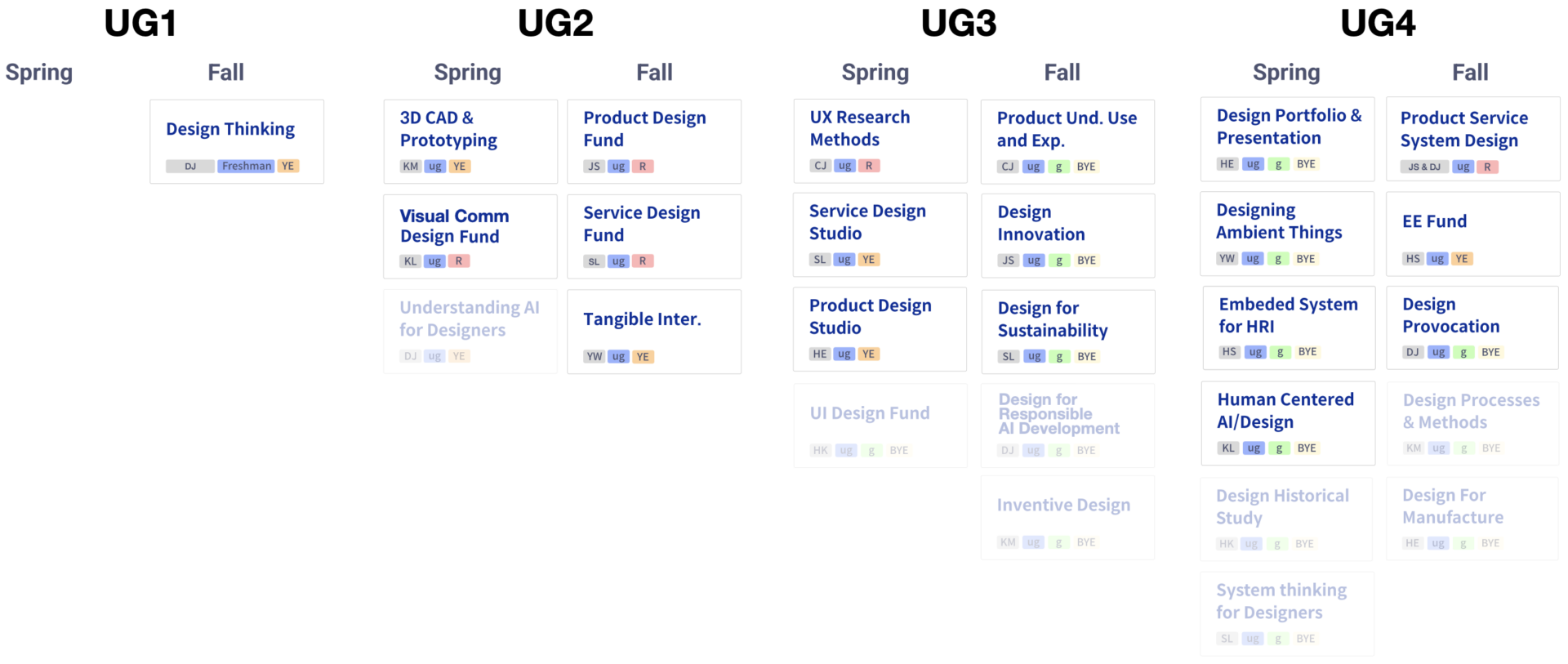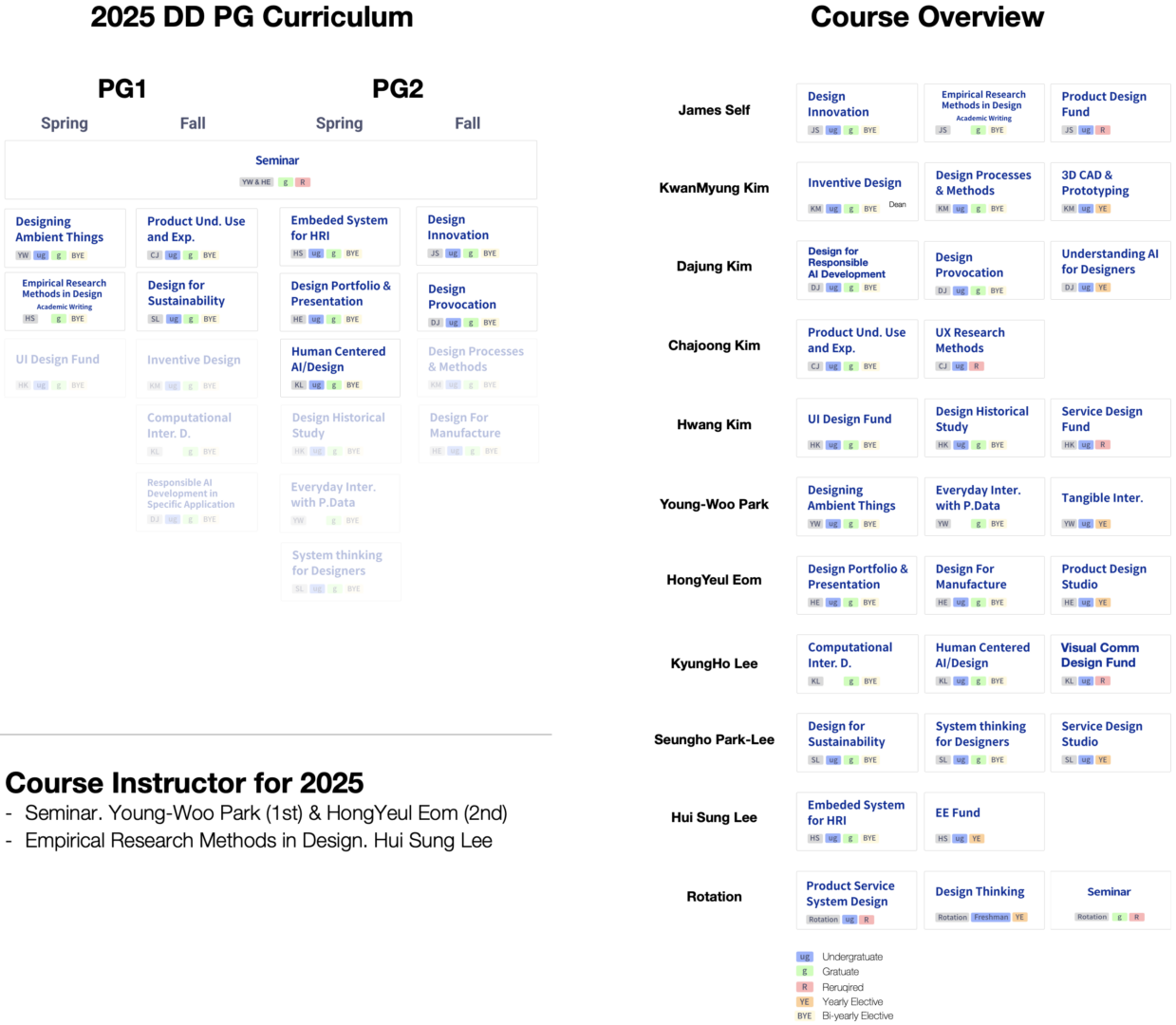
New Curriculum Update Information Session
UNIST Design recently made a major update to its curriculum, and an online information session was held with four faculty members (James A. Self, Hongyul Eom, Dajung Kim, and Seungho Park-Lee), one student affairs administrative staff member (Sohee Park), and more than 25 students across all levels (undergraduate, graduate, and doctoral). Here, we share a summary of the session.
The Vision for the Update
The curriculum update is driven by the evolving nature of design. As society changes and technologies advance, designers must be prepared to address new challenges and operate within broader systems that include both products and services. The revised curriculum aims to equip UNIST Design students with the necessary skills to navigate this complexity. Key considerations include expanding the understanding of products contextualised within broader product-service systems, strengthening fundamental design and research skills, and introducing courses on emerging technologies such as artificial intelligence. These changes reflect global shifts in design education and align with UNIST’s identity as a science and technology research university.
The Basics of the Update
The undergraduate curriculum maintains a 48-credit major requirement but reduces the number of required courses while increasing elective options. Some required courses have been removed or replaced, and interdisciplinary learning is emphasized by incorporating electives from other departments, such as biomedical engineering and computer science. The number of prerequisite courses has also been reduced, allowing students more flexibility in planning their academic path. In the graduate program, credit requirements remain the same, and there are no required courses other than seminars. Additionally, more courses are now cross-listed between undergraduate and graduate programs, allowing for a broader range of learning opportunities.
See a diagram that simulates the courses available in the upcoming semesters below (also available in PDF. Please note that this is a simulation based on the current faculty members and their sabbatical plans; therefore, the availability of elective courses may be subject to change.


Students’ Questions & Our Answers
Question 1.
What courses can replace the discontinued Creative Design 1 and 2?
Answer
- Creative Design 1 is replaced with Visual Communication Design Fundamentals (DES 231).
- Creative Design 2 is replaced with Product Service System Design (DES 431).
- These substitutions ensure that students who started under the previous curriculum can still fulfill their credit requirements without disruption.
Question 2.
With the removal of some prerequisite courses, some students can now graduate earlier than expected. How should students approach this situation?
Answer
- Graduating early can be beneficial, but students should consider whether they have gained enough hands-on experience and built a strong portfolio.
- It is highly recommended to take internships or participate in research labs at UNIST before graduating to gain real-world project experience.
- Students who are unsure about their readiness should consult their academic advisors to discuss their options and career goals before making a decision.
- It is also strongly encouraged to talk directly with individual professors whose research areas align with the student’s interests. Professors can provide valuable guidance on course selection, career direction, and future study opportunities.
- It is also recommended to make full use of course counselling sessions with your advisor professor. Rather than provide a simple list of courses to take next semester, see them for course counseling and career path advice.
Question 3.
The capstone project used to be two semesters long (Creative Design 1 & 2), but now Product Service System Design is only one semester. Will this impact project quality?
Answer
- While the project duration has been reduced, the new structure is designed to encourage efficiency and focus, preventing procrastination and delays that often occurred in the previous two-semester format.
- Students are encouraged to start planning their capstone project ideas during the summer break, so they can begin the course with a clear direction.
- The revised course aims to integrate both product and service design, reflecting current trends where digital services and physical products are increasingly interconnected.
- Students concerned about their capstone project should reach out to the course instructors in advance to discuss potential topics and get guidance on preparation strategies.
Question 4.
A student who plans to graduate this year wants to take Product Service System Design, but its prerequisite is only offered in Fall 2025. How can they complete the course and graduate on time?
Answer
- The student can submit a Prerequisite Exemption Form, which is available on the Department website: https://design.unist.ac.kr/useful-forms/
- After filling out the form, the student must get approval from the professor in charge of the course through the administrative office.
- This exemption allows students in unique situations to fulfill their graduation requirements without being delayed by scheduling conflicts.
- If students have similar concerns about prerequisites or course planning, they are advised to discuss their situation with the relevant professors to explore potential solutions.
Further questions?
Please feel free to approach the education committee – professors James A. Self (Chair), Hongyul Eom, or Dajung Kim – or any individual professor for guidance or consultation.